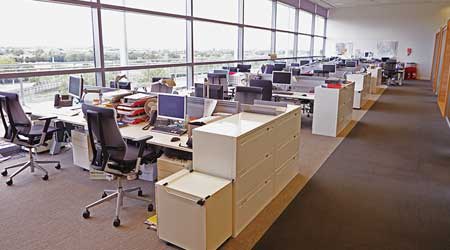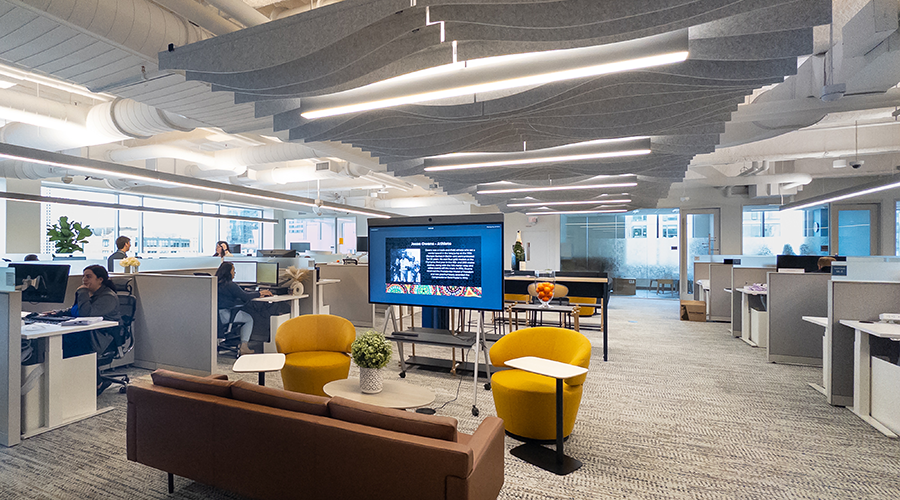 Daylighting for all is a huge benefit for open office plans.
Daylighting for all is a huge benefit for open office plans. Overcoming Open Office Obstacles That Sabotage Success
The divide is still deep regarding how workers feel about open office plans. But controlling noise and giving workers flexibility are two steps to overcoming resistance.
With companies desiring to increase the collaboration among their workers, open office plans have grown more and more popular. In December 2017, Forbes reported that 70 percent of all U.S. office space was open office.
While the open office concept has been accepted by most employees that fall into the Gen Z and millennial classifications, this configuration has been a challenge for older colleagues who are used to working in individual offices or tall wall cubicles. Open workspaces can encourage a more flexible and cohesive environment for some, but can also be distracting for others if the design is not thoughtfully laid out. How do companies find that thin line between collaboration and distraction to ensure productivity remains high among all generations of its employees?
Noise Pollution
In an open office setting, noise is the one of the most common complaints from workers of all generations. But how can it be fixed? Addressing acoustics is one way to do this. For example, the addition of soundmasking to an open office setting can alleviate the distracting sounds of clicking keyboards, ticking clocks, and muddled conversations. It can also help increase productivity as typical office sounds can serve as a distraction for employees.
Adding acoustic materials into the design of the office can also help with noise issues. Many manufacturers are beginning to offer more design-related acoustical materials that can help with sound. This even includes new lighting products being developed that integrate noise-suppressing acoustical materials. Utilizing absorptive finish materials can also help alleviate some of the noise. During the design, how sound travels within a space and between spaces should always be considered. Adding a small element throughout the area, such as a panel, a wing, or more enclosure type items at the optimal heights should help with the acoustics in the space.
It is also essential to make sure adjacencies are correct. For example, avoid having louder collaborative areas next to individual workspaces because the sounds for the collaborative area will translate over. It is important to be cognizant of this while laying out the space. Consider having buffer spaces, such as closets and corridors, between noisy spaces. There should be flexibility throughout the office so employees can utilize the space to its utmost potential, but adding these elements has to be intentional and planned accordingly.
Providing flexibility in an open office space is always essential for productivity. Having tables with wheels or benching systems can alter the look and feel of any open space. Freestanding furniture can be transportable and help with the flexibility of the office. Offering different ergonomics to employees can increase productivity. Some people work more efficiently standing up, while others perform better while they are sitting down. Costs for the height adjustable workstations are coming down to allow more companies this opportunity.
Open spacing can help with the collaboration of workers, but it is also important to have quiet places where individual or small group work can get done. This includes private offices, conference rooms and even phone booths/huddle rooms. Having a variety of spaces where individuals can get away and work will be beneficial to not only them, but the quality of the work. Just make sure that these areas have acoustical separation from collaborative spaces.
Related Topics:













